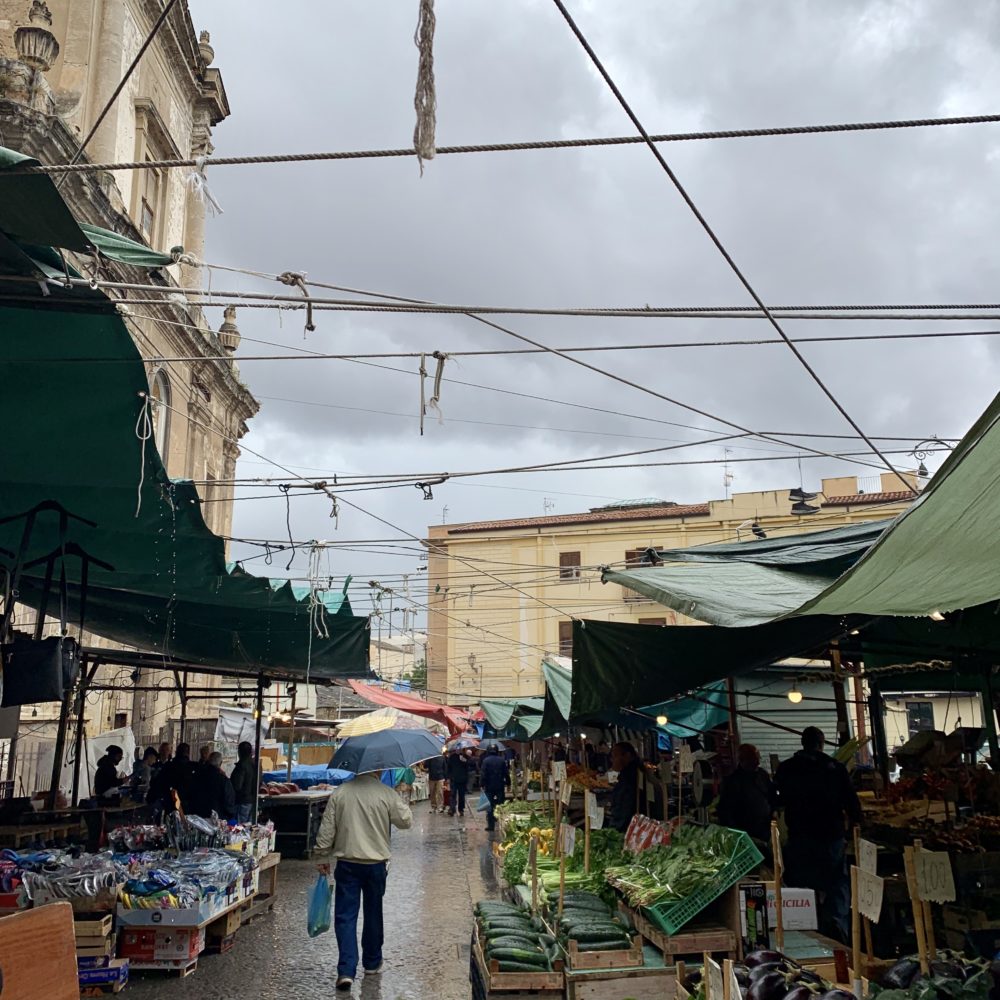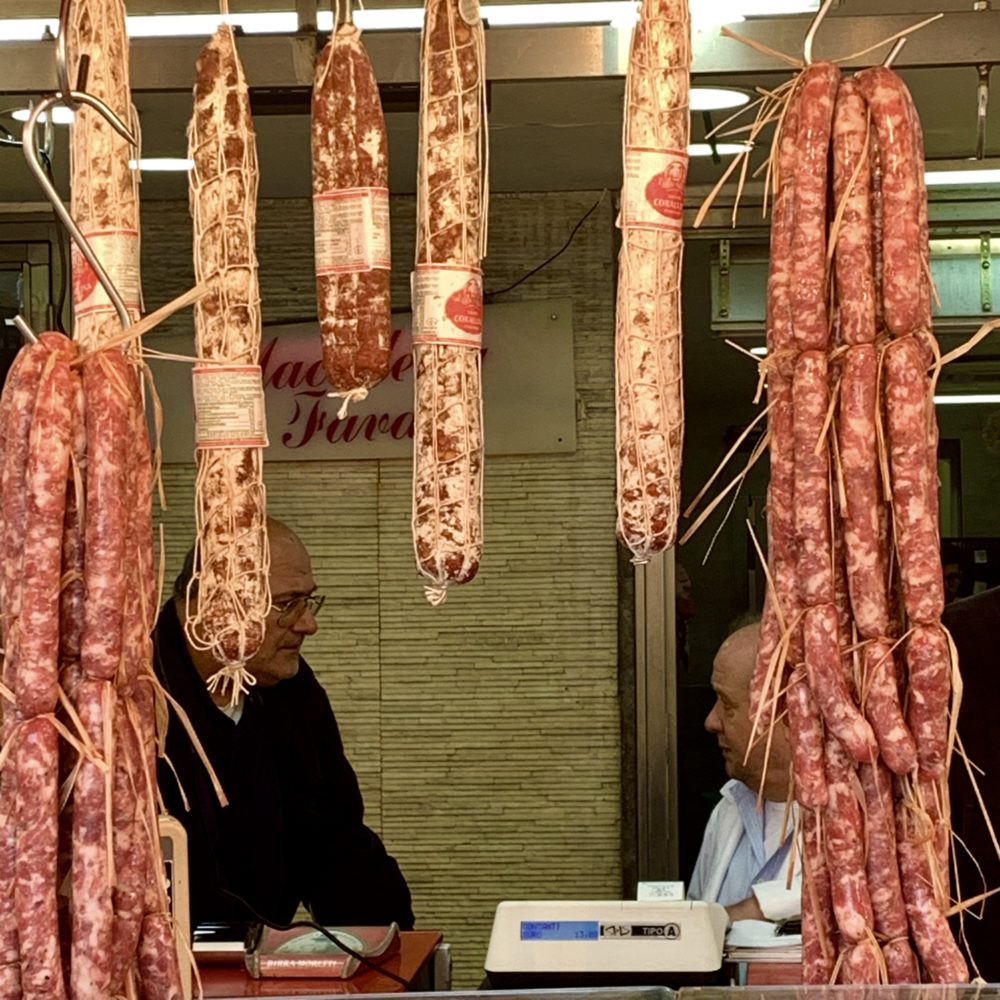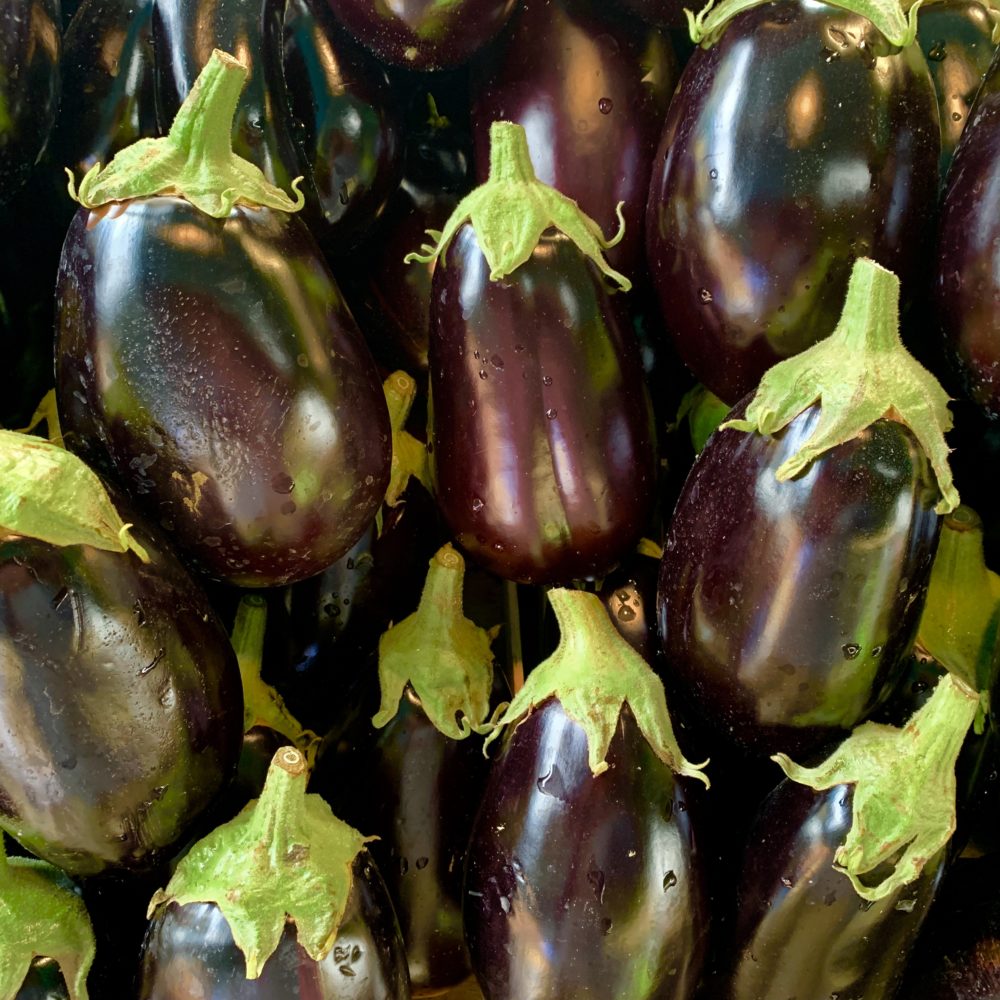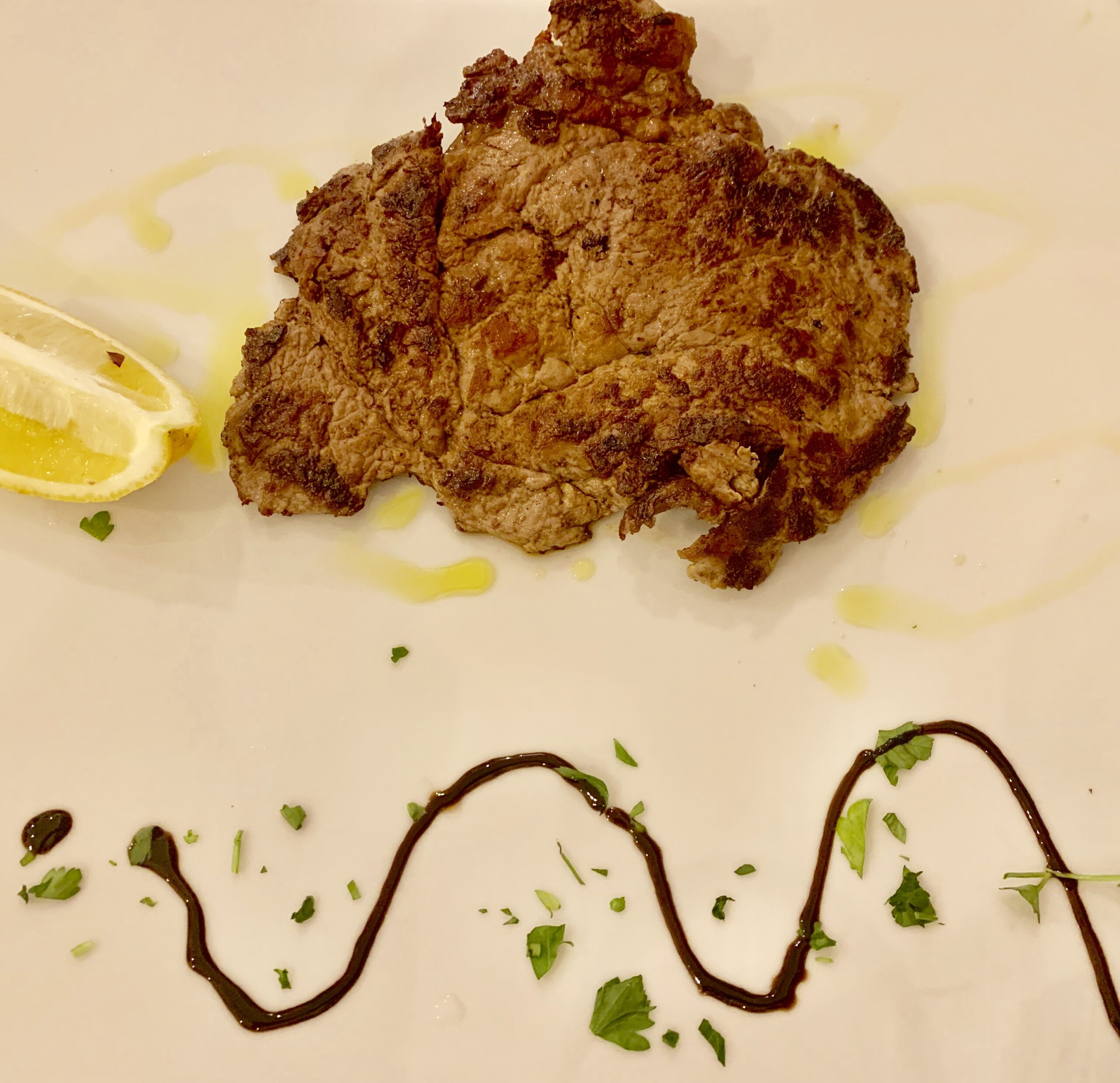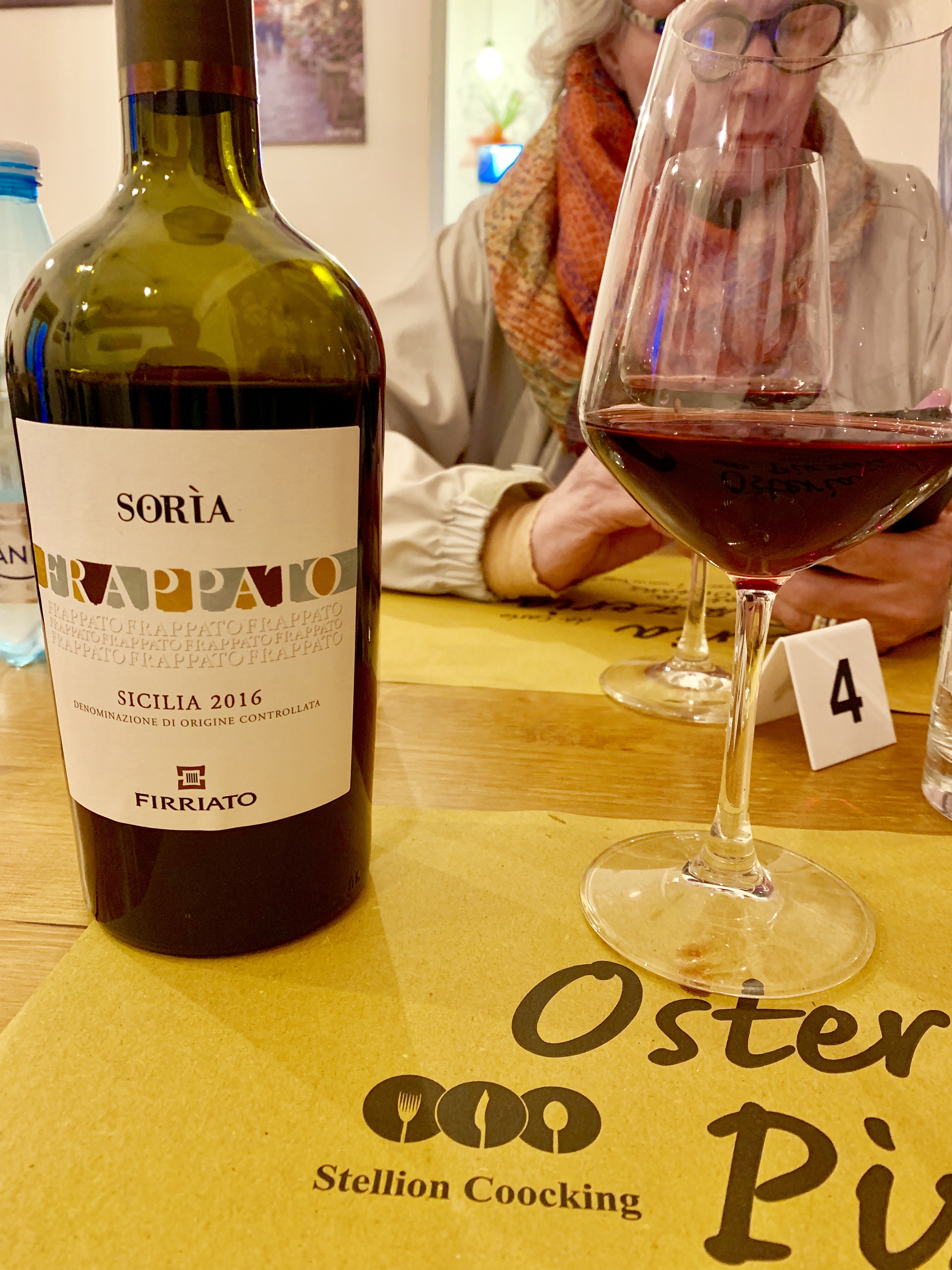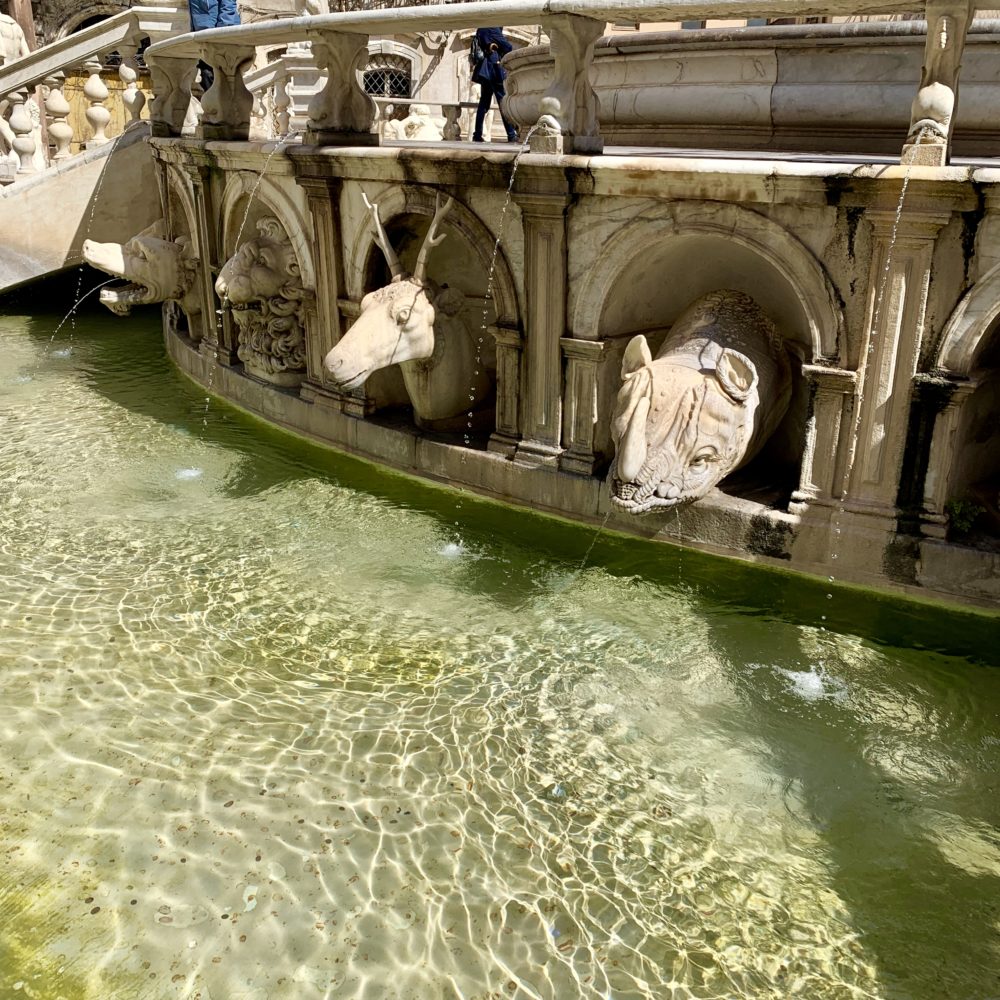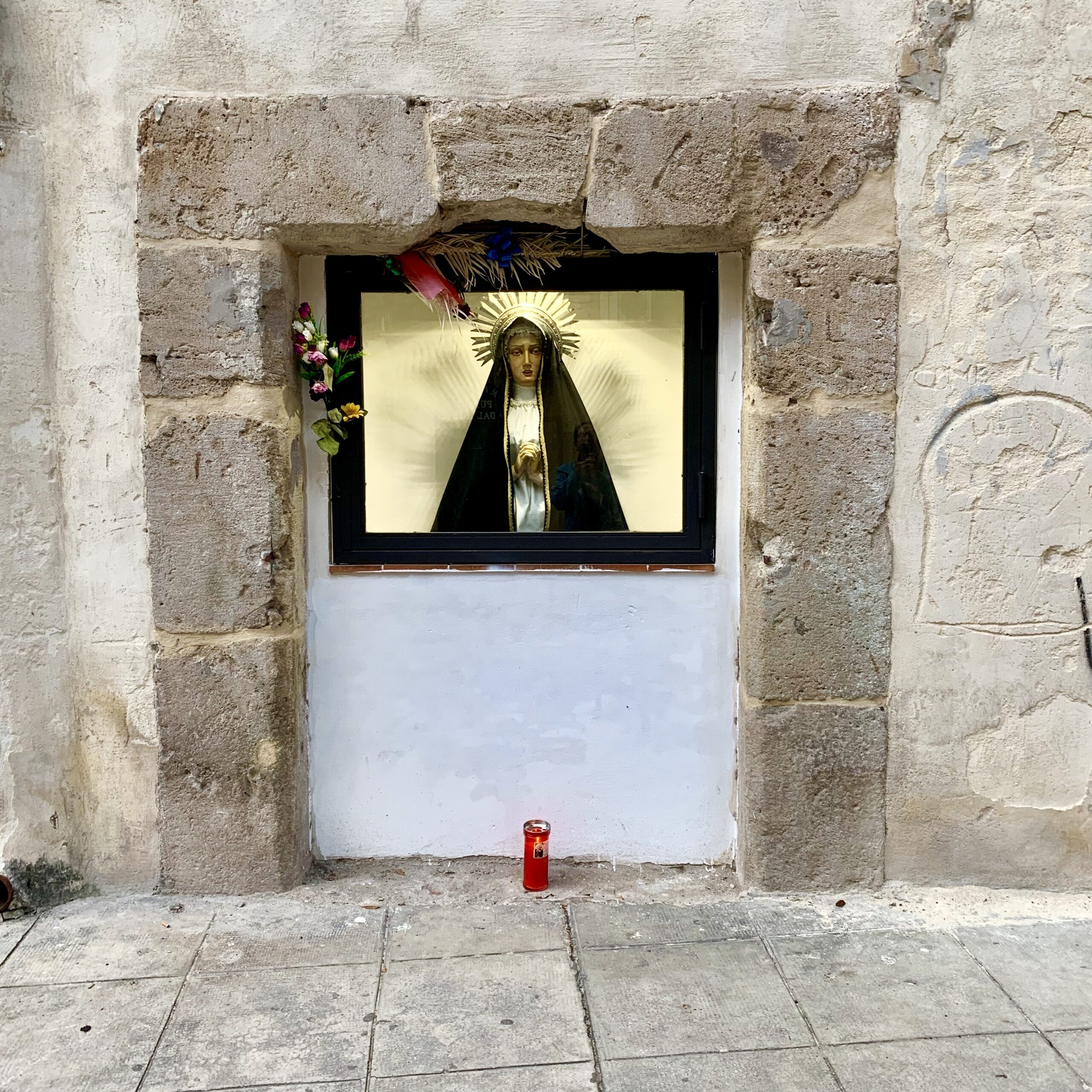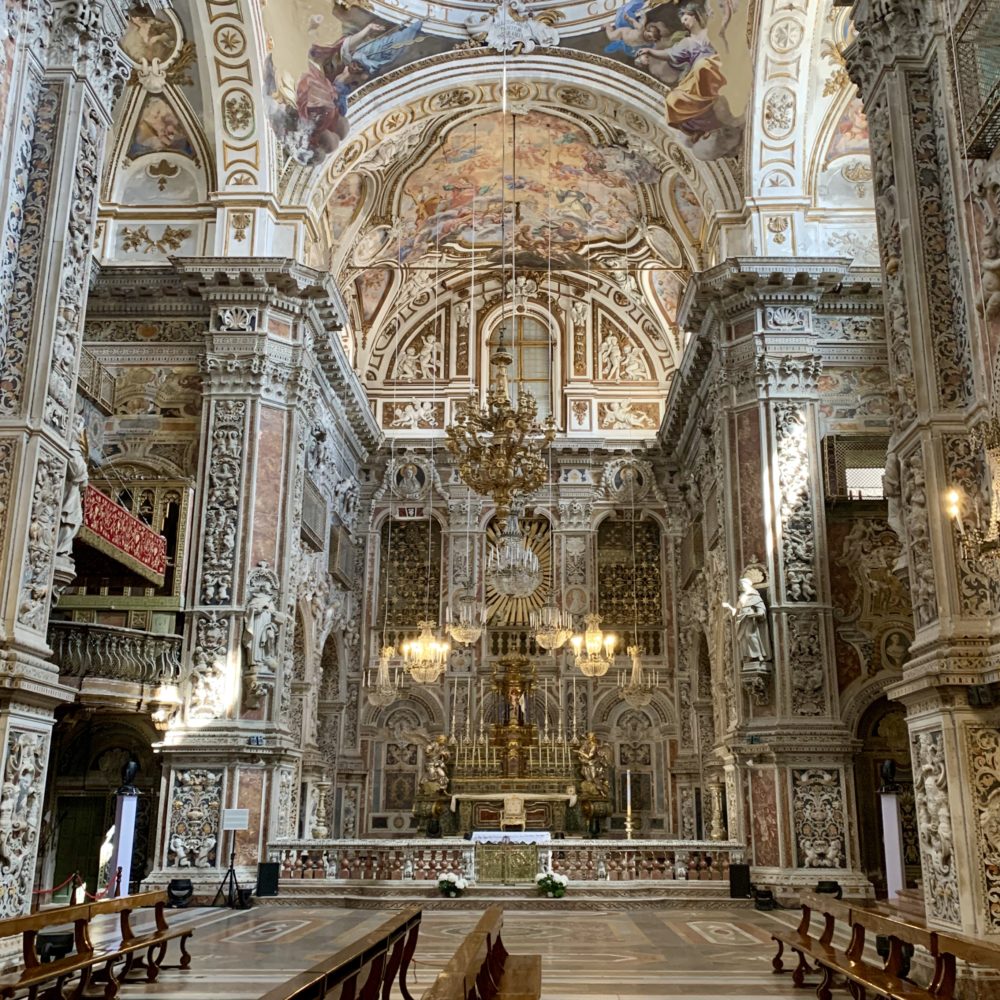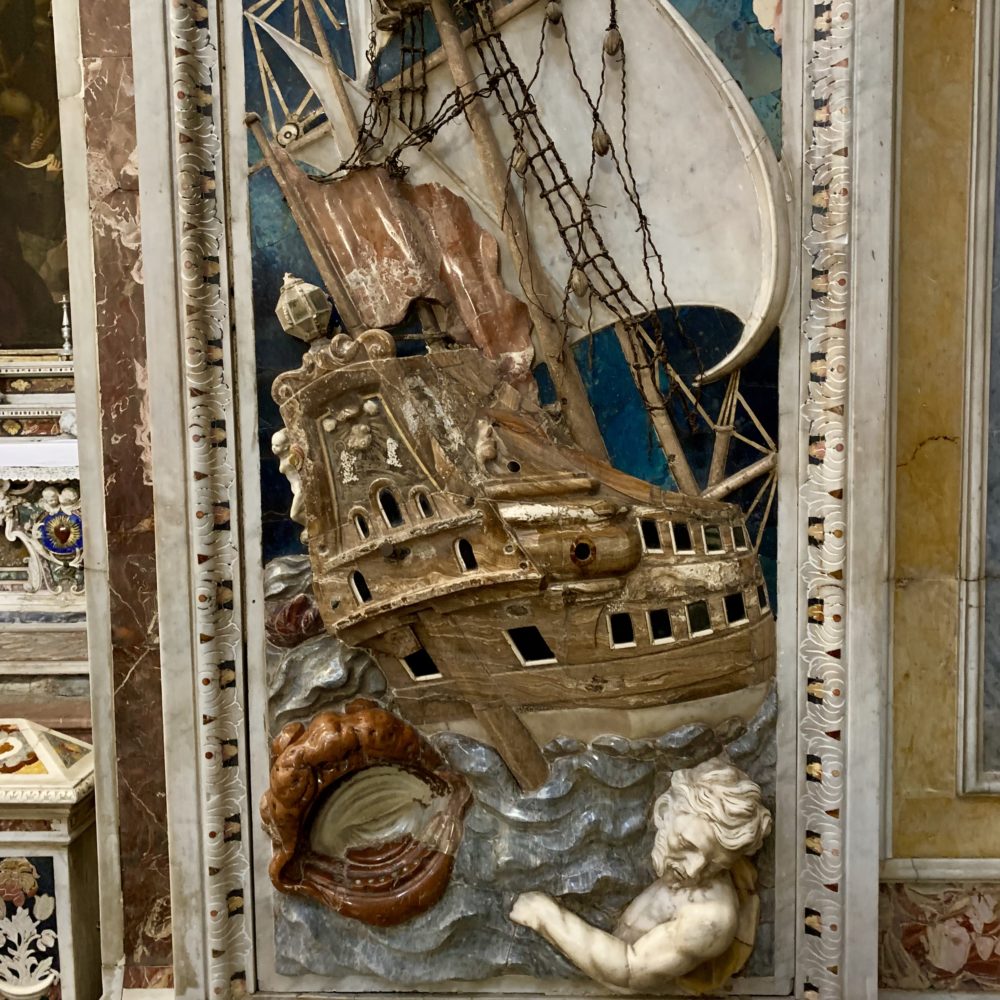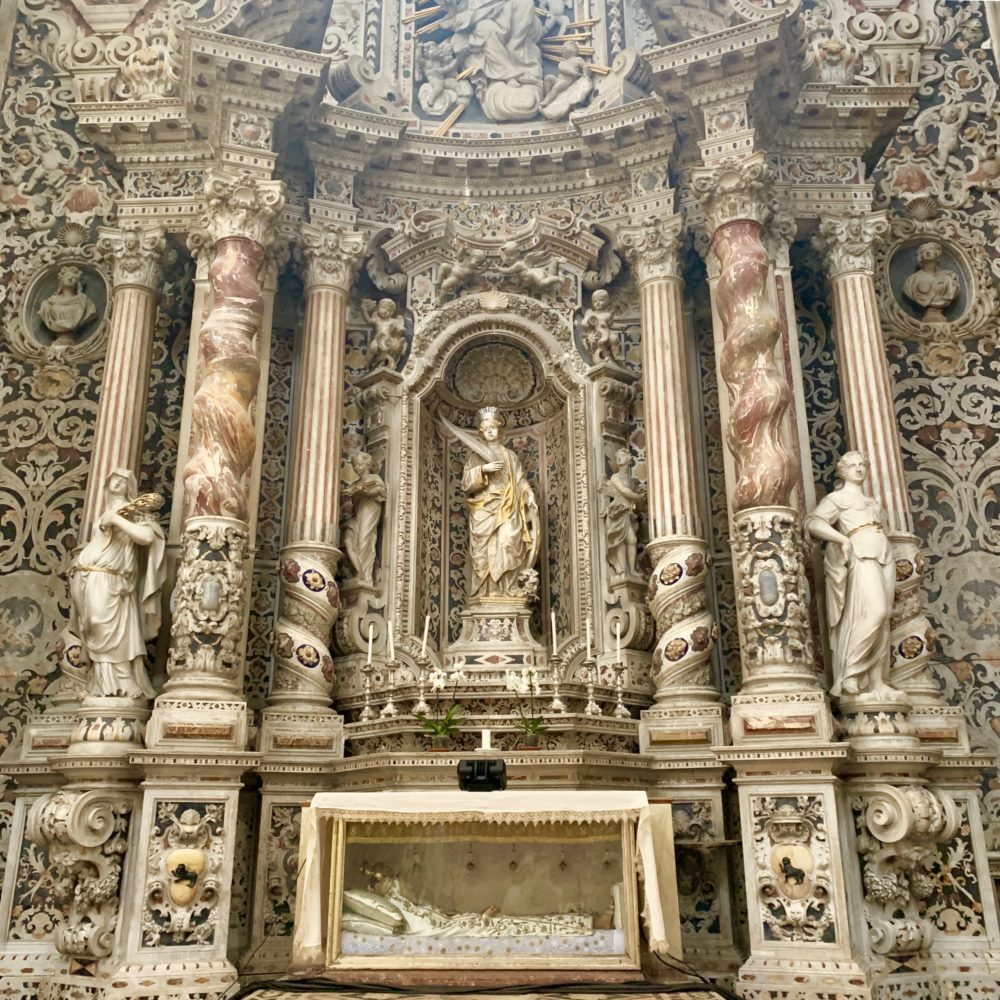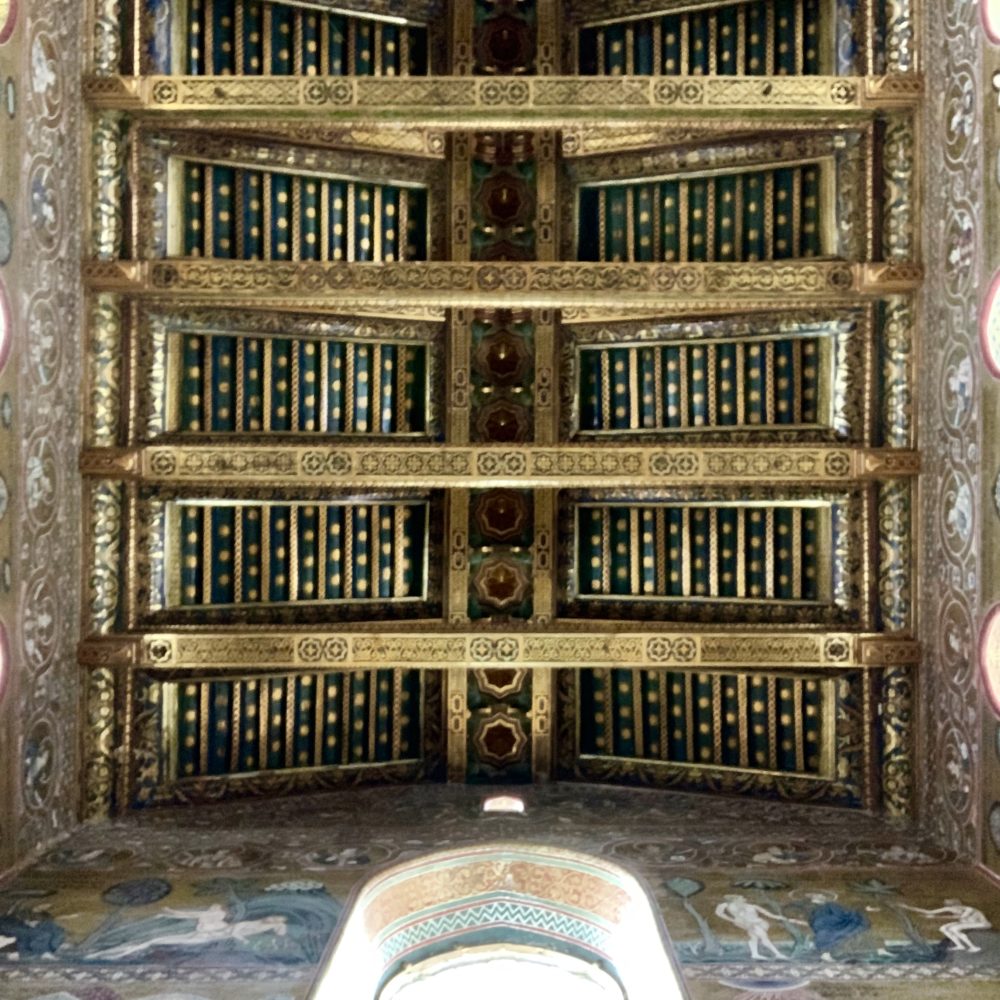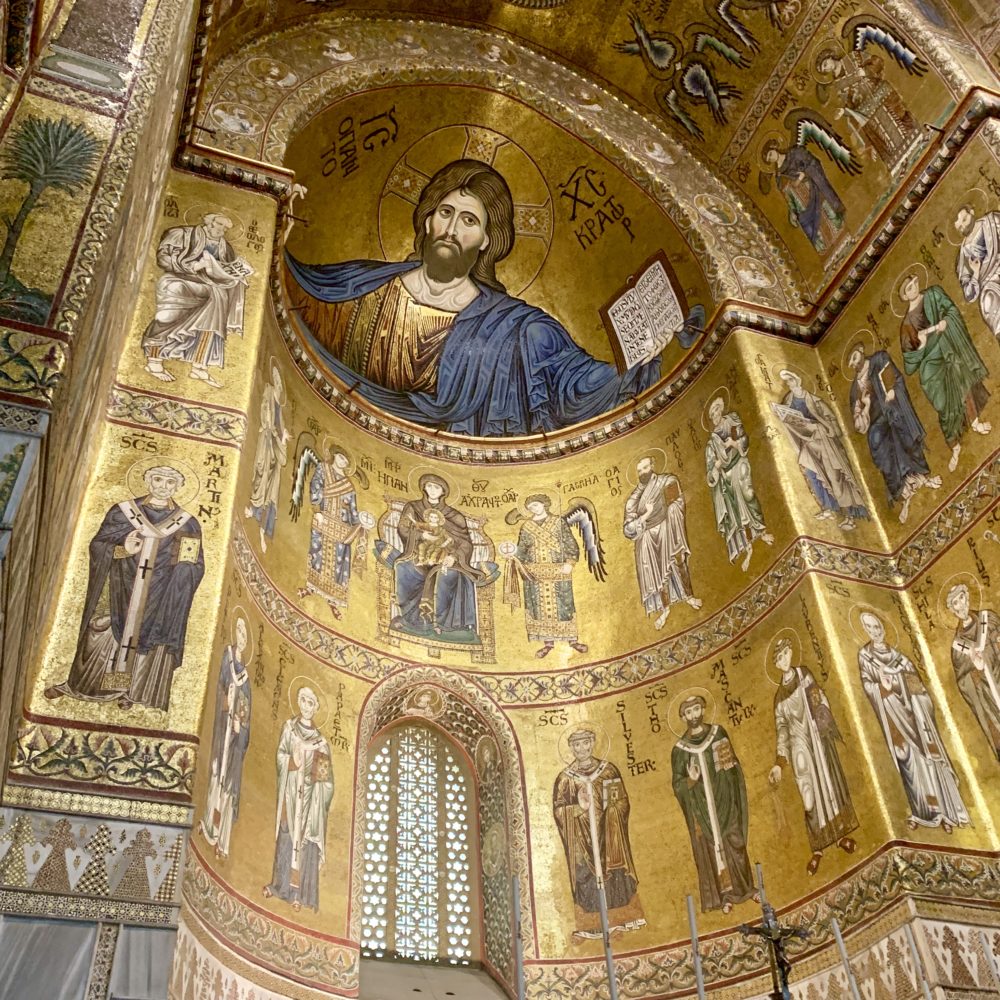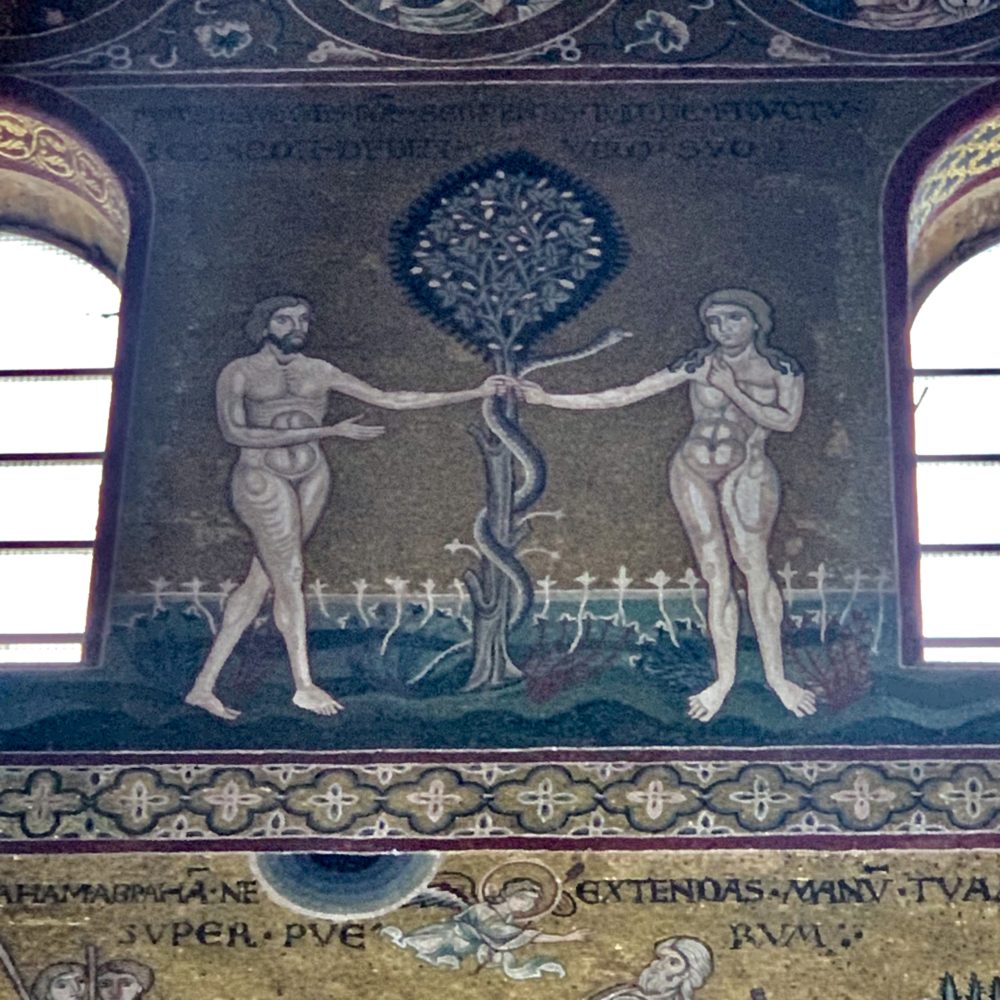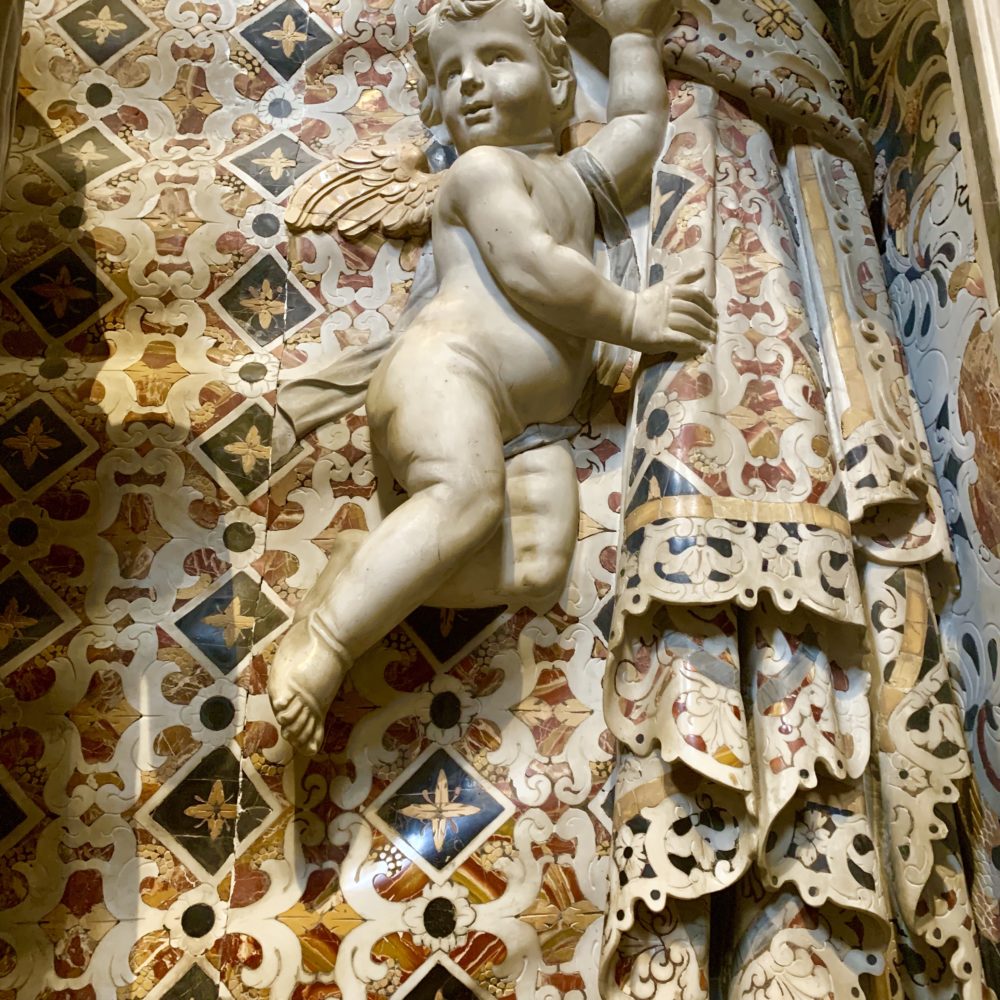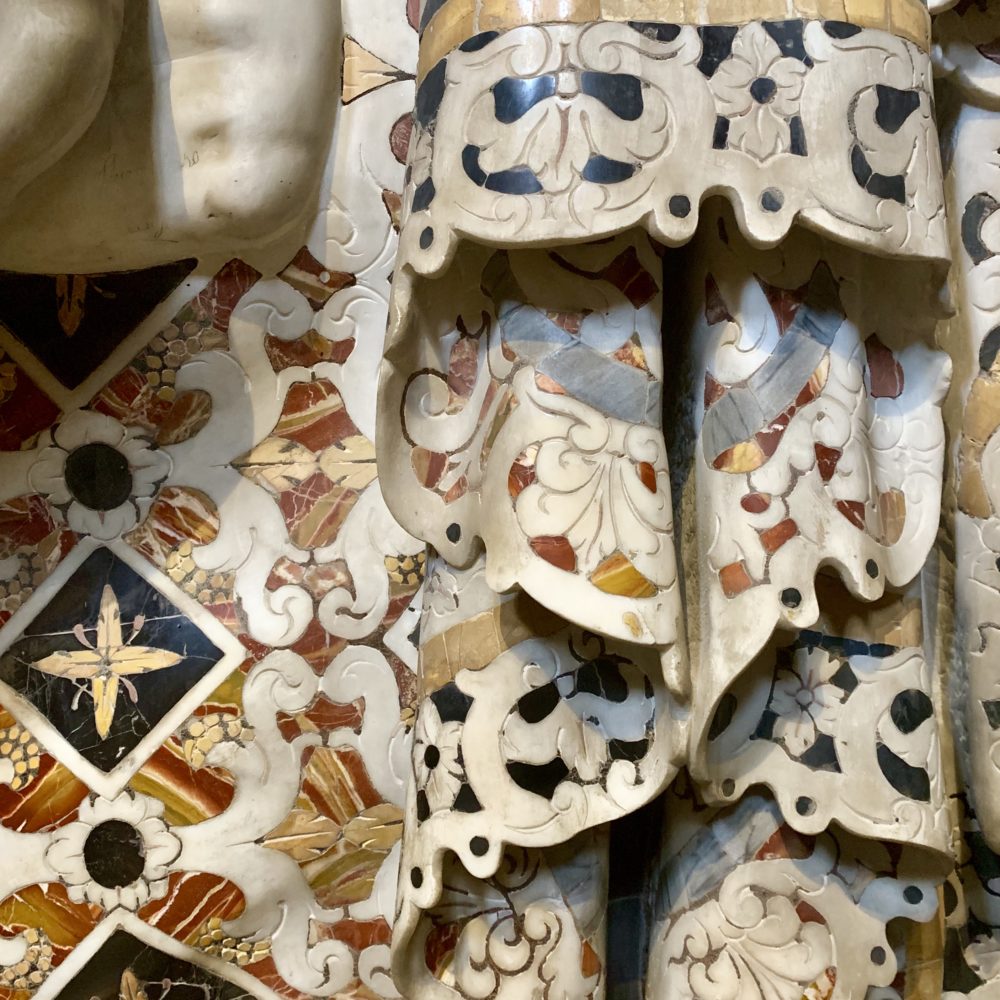PART THREE 13 – 20 Maggio 2019
It is hard to believe we can condense so much of a week in Palermo into three posts. This post includes Bonnie’s glamorous birthday night out and ends with the fate of Angelica (the focus of the Teatri dei Pupi) and further observations on fashion.
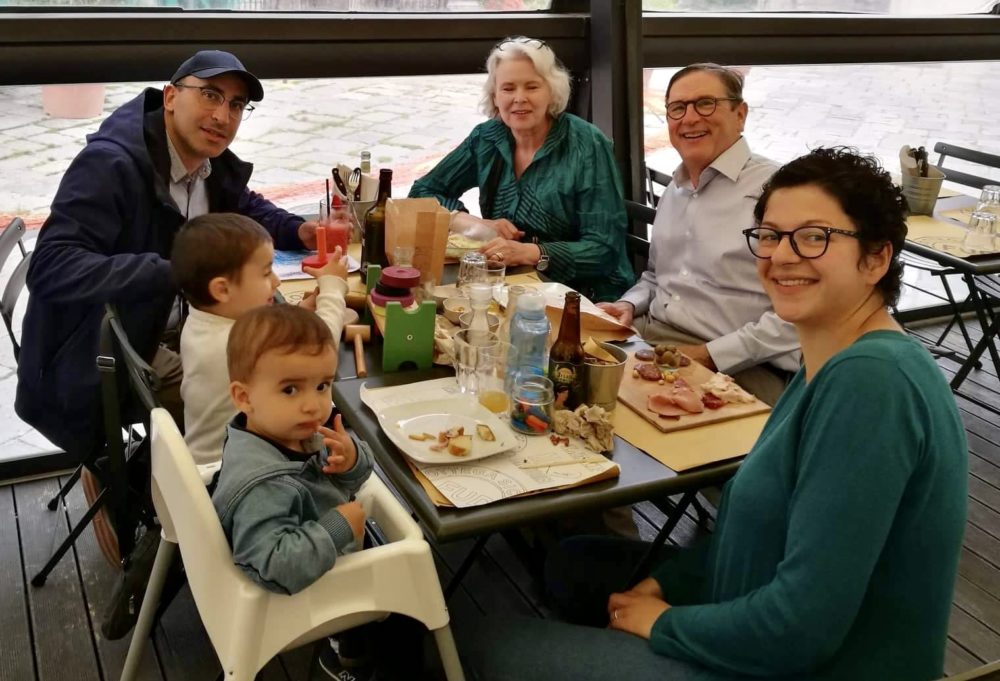
Bonnie’s Birthday—A Night at the Teatro Massimo
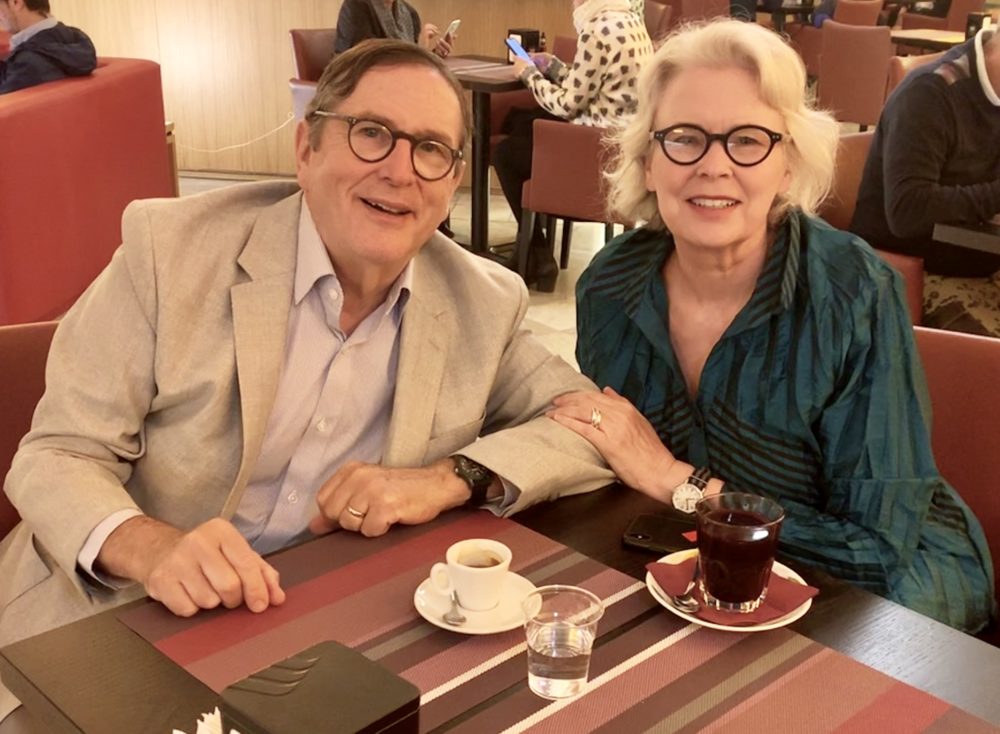
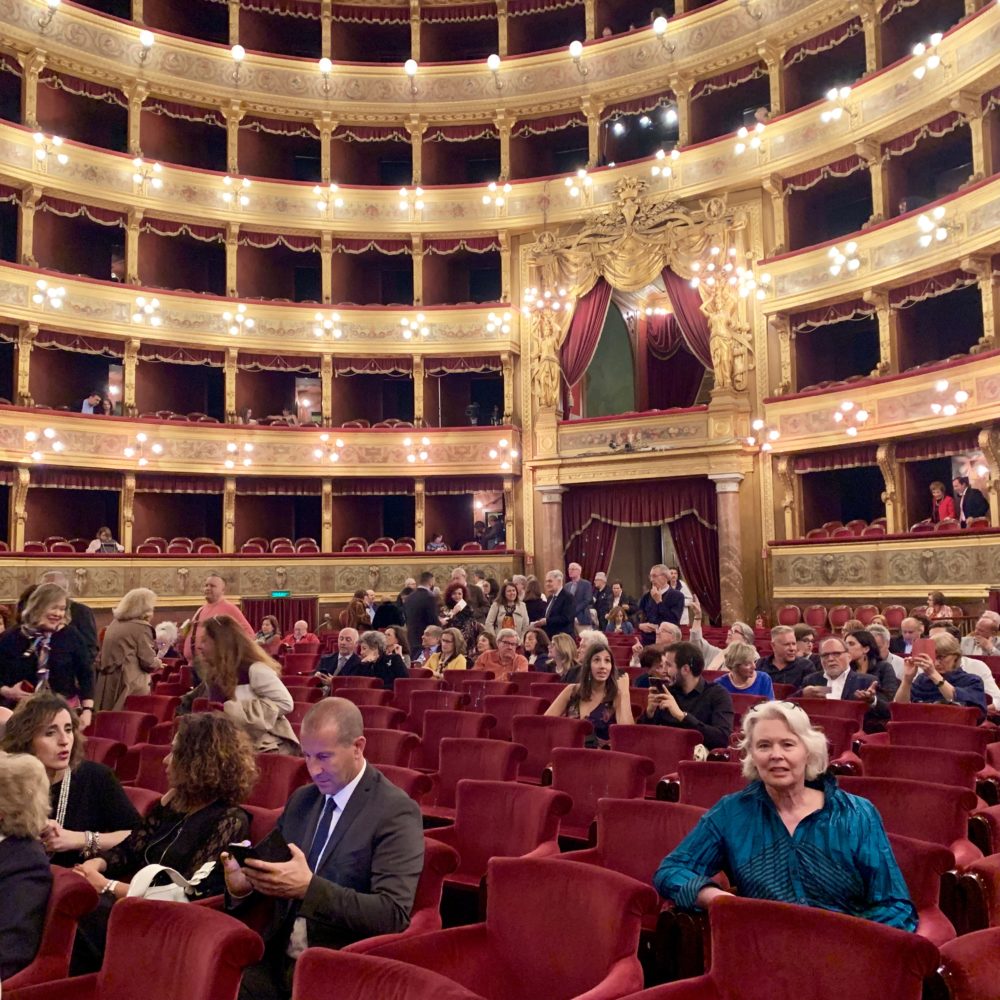


PM
Il Palazzo Conte Frederico
The notable palazzo of Conte Frederico is built into the walls of the city and one of the old towers. It has been in the possession of the family since the 1700s, and the family still uses it as their home. Rooms are on a slight curve following the alignment of the old wall. Family members give hourly tours to help defer the costs of upkeep. The palazzo is filled with family mementos, art, trophies, weapons, needlework, and kitchenware.


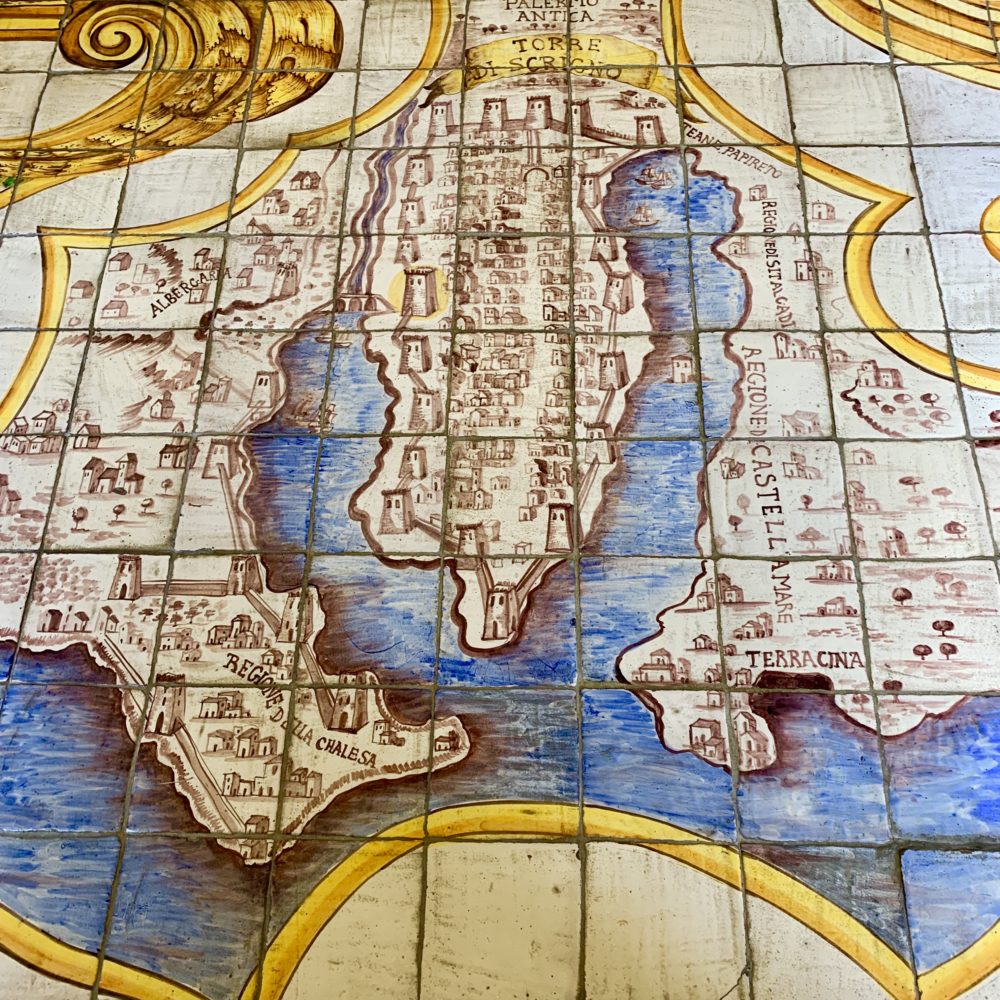


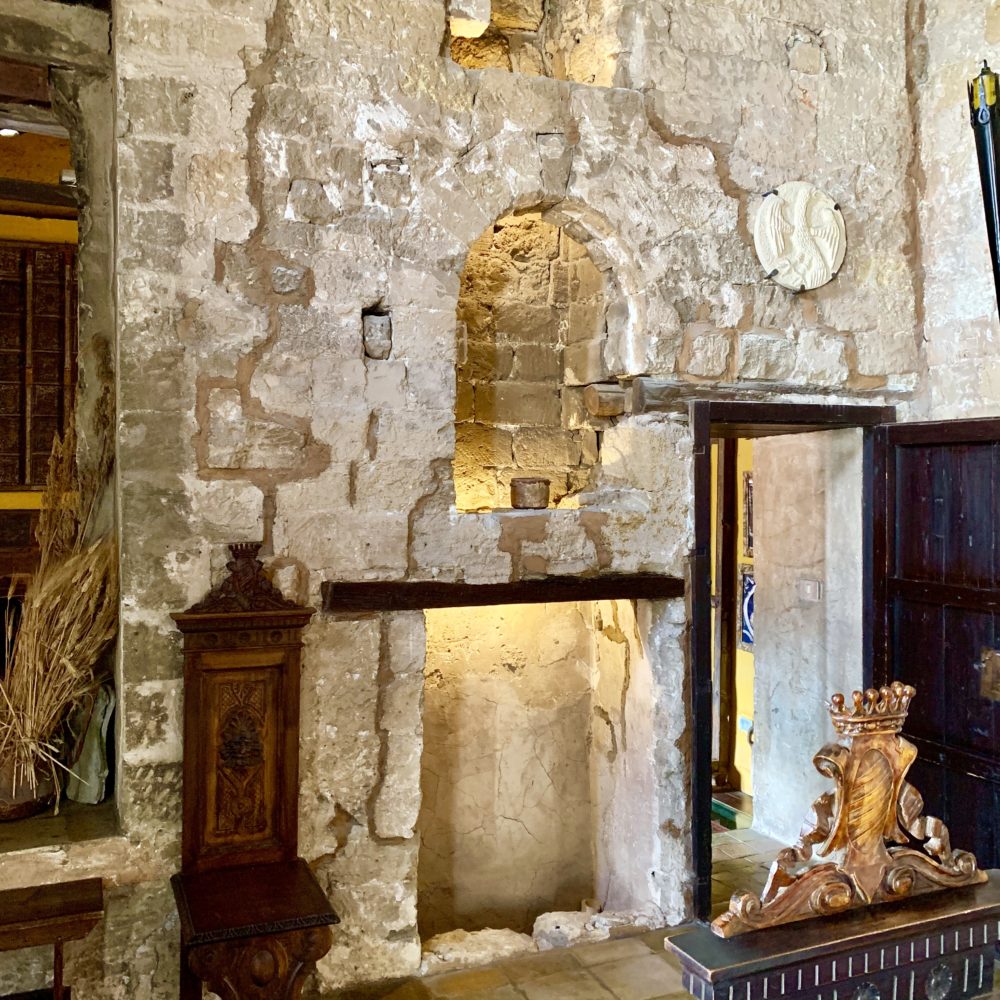




Palazzo dei Normanni
The huge Norman Palace was the seat of Norman kings in about 1100 A.D. and later the official location of heads of governments.



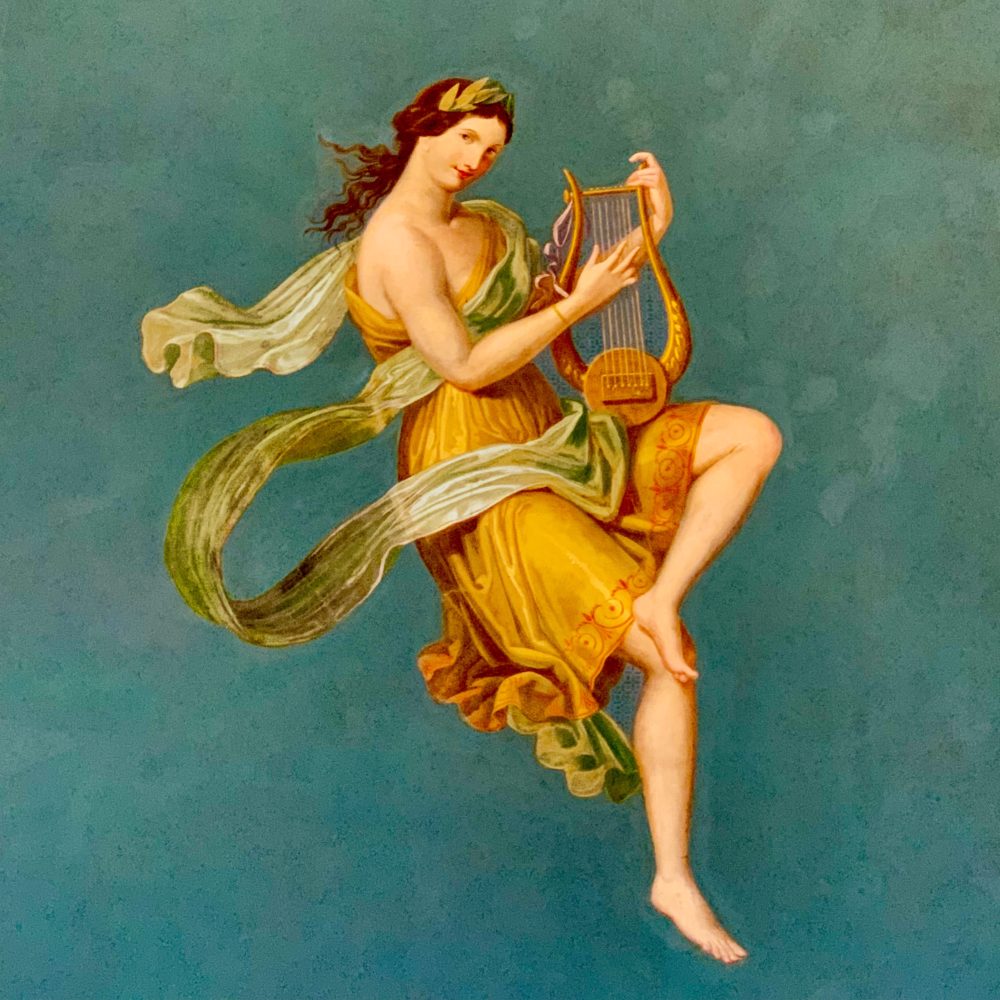
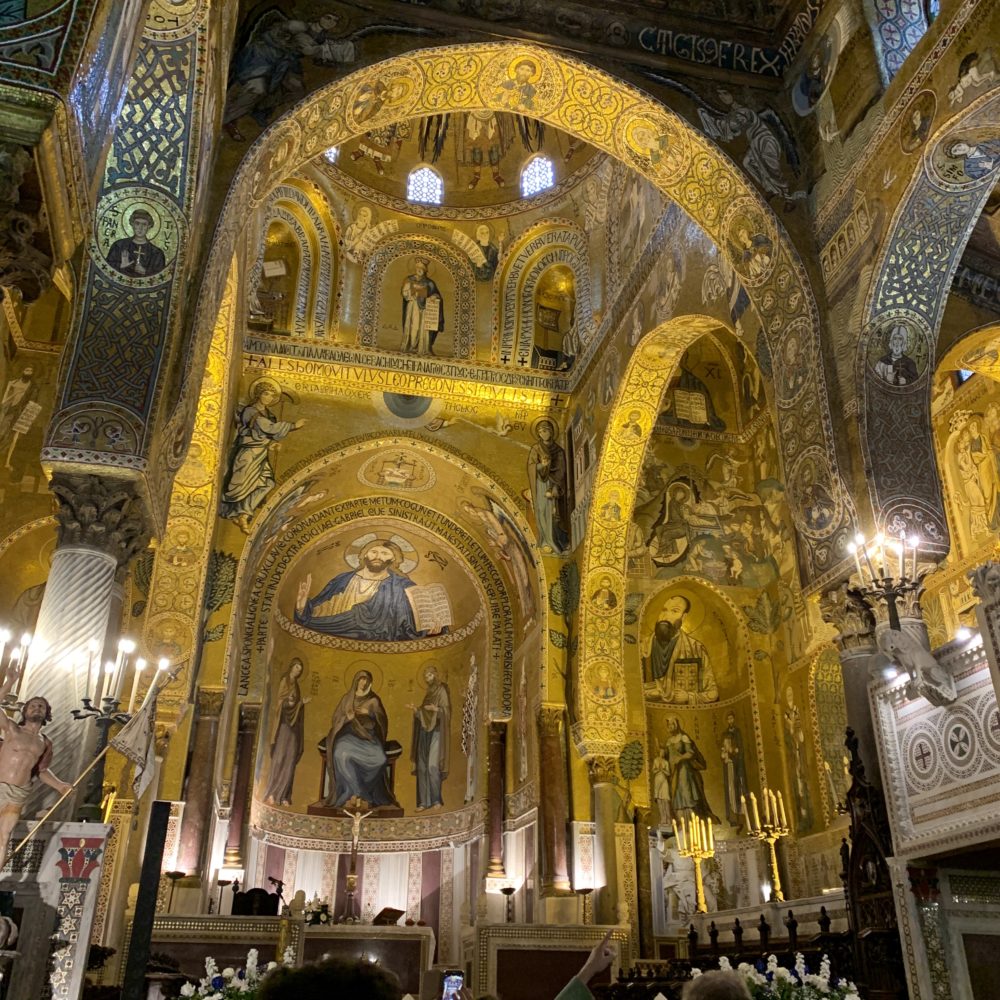


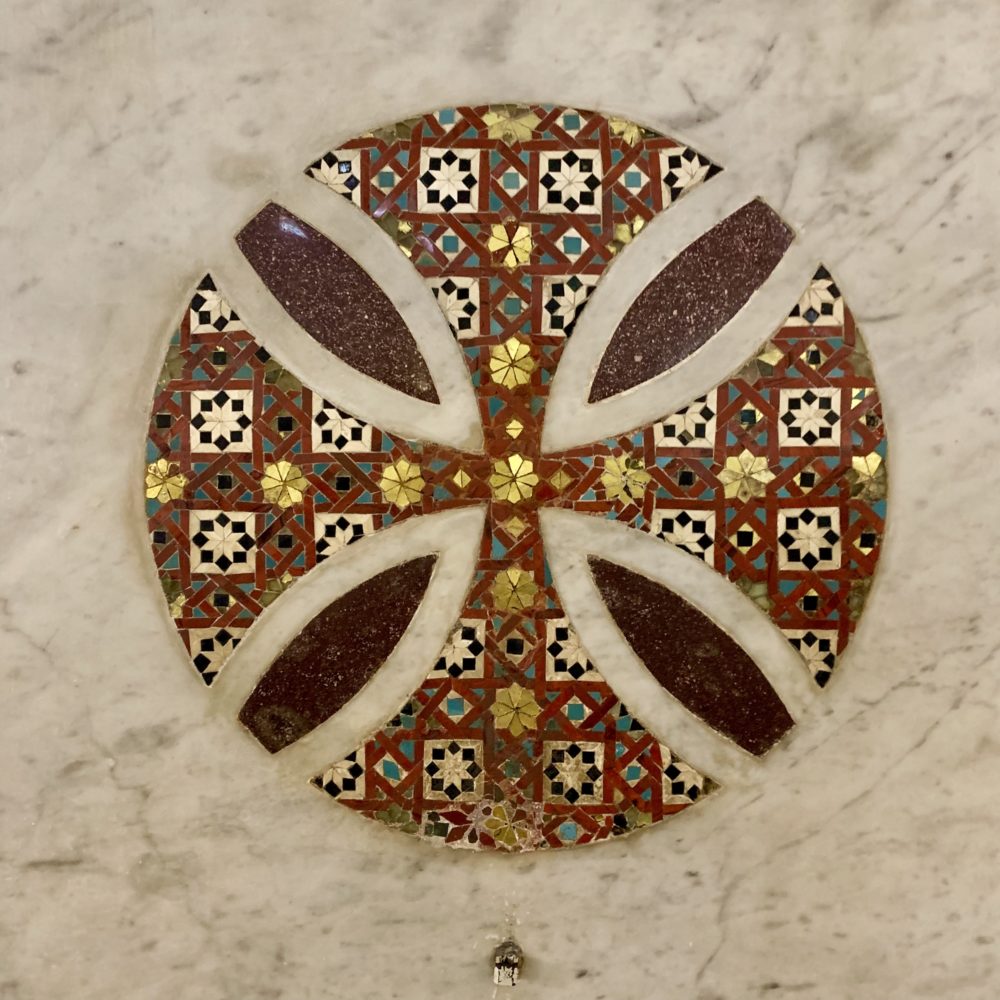
Street Art
Lots to see. Graffiti artists can work legally on abandoned buildings.








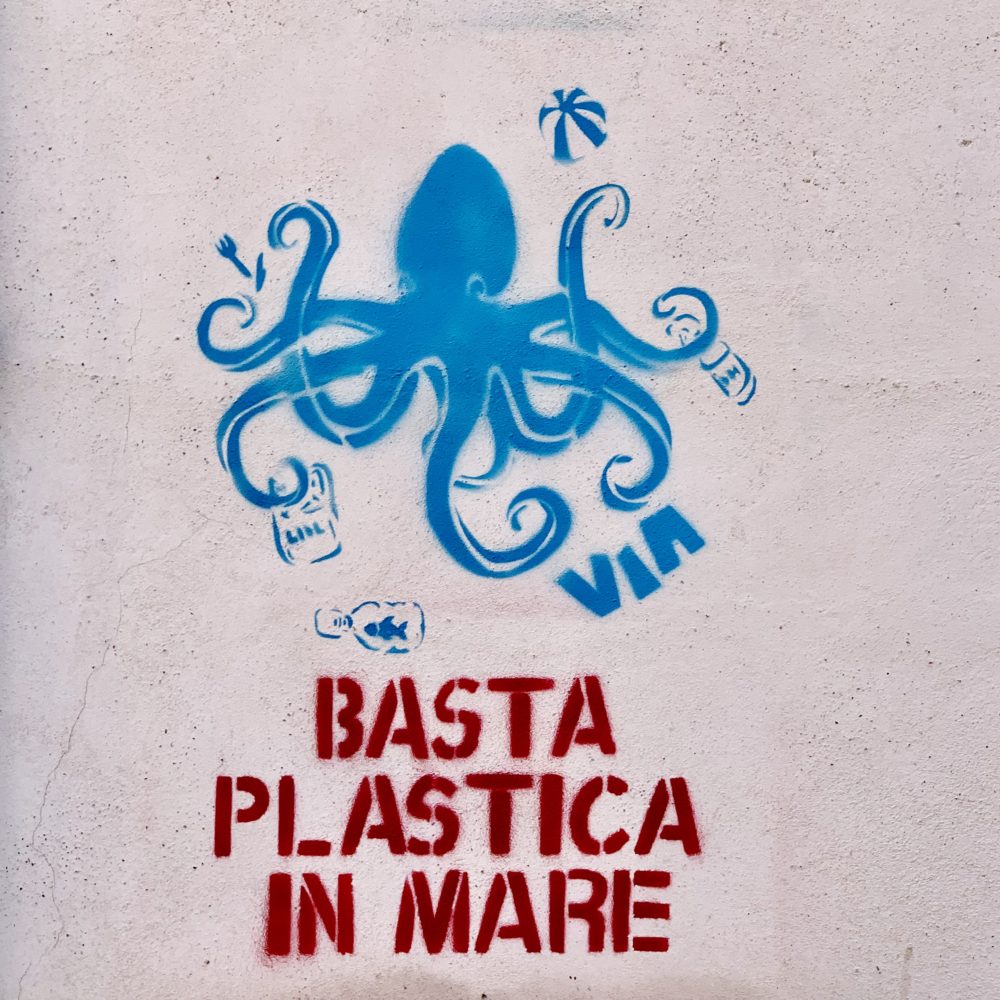
Music
Robert came across this middle-school group practicing during one of his morning walks.

Teatro dei Pupi
Yes. More Opera dei Pupi. Palermo has at least four puppet theaters (we went to two and tried to attend a third), and there are more in the rest of Sicily (we went to one in Siracusa). The puppet Saracens are still trying to take control of Europe. This time Paris is the site of a battle. The two cousins, Ronaldo and Orlando, keep knocking off monsters and slicing and dicing Saracens with the focus of their love on the beautiful pagan Angelica. We still do not know who wins Angelica’s favor.

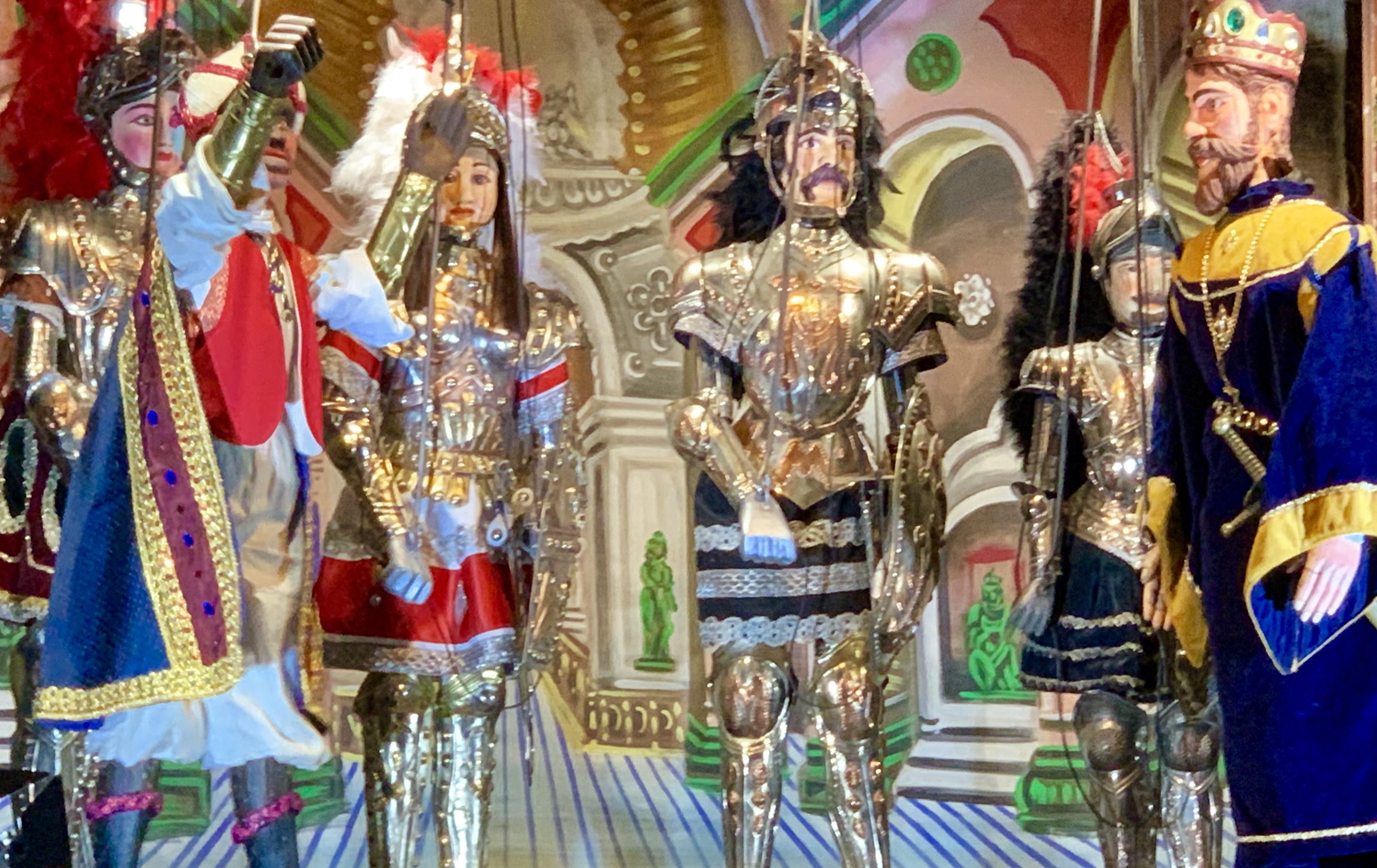


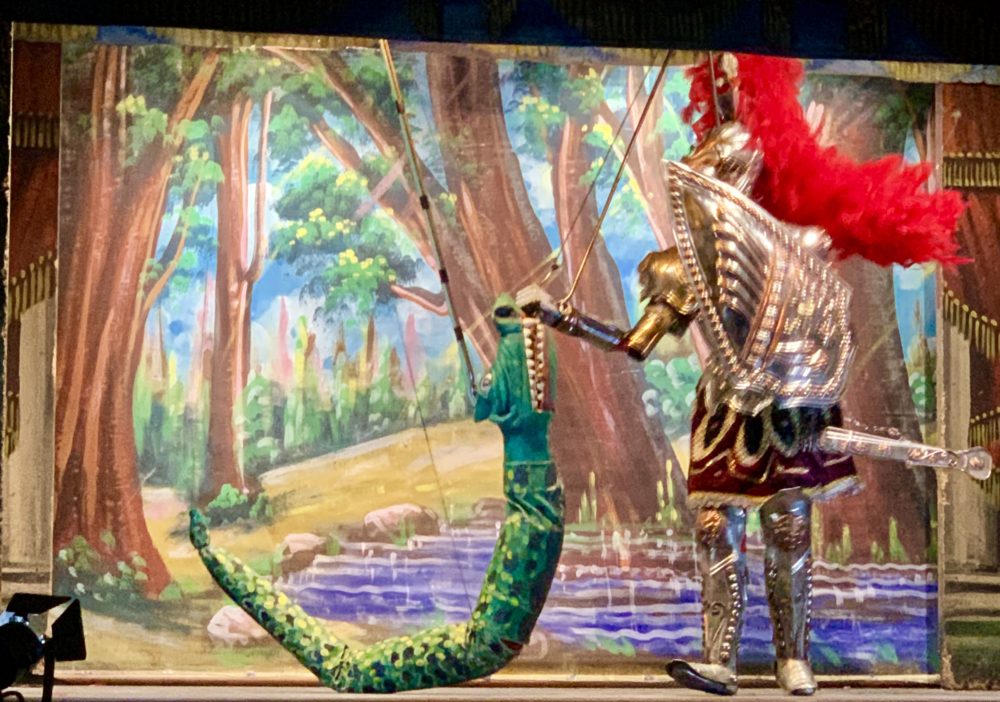

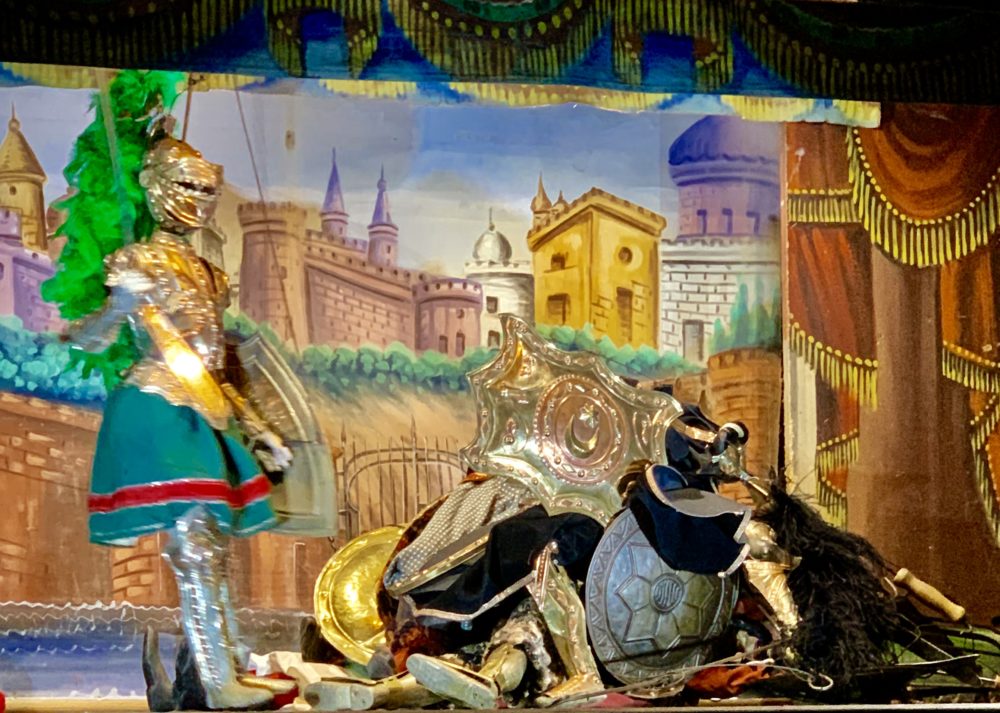
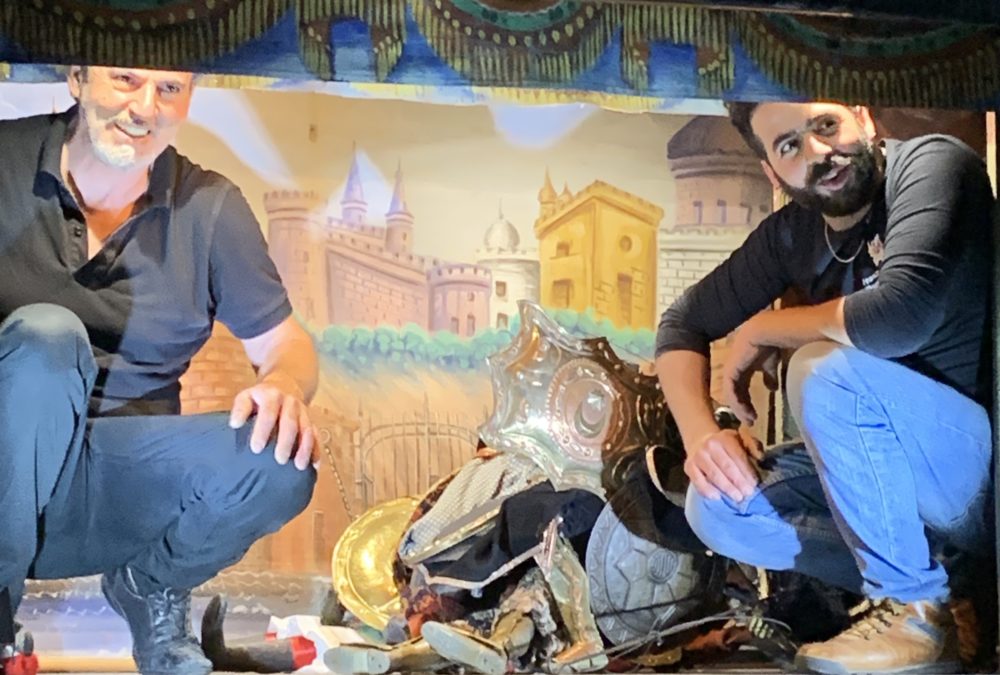
Oh. Did we mention that we went to another performance in Palermo? No photos .were allowed.
We tried to see a performance at a third Palermo puppet theater on Sunday night, but it was cancelled because the audience was too small (was that the night of the Game of Thrones finale?). Other puppet performances had been packed. The good news is that the elderly padrone gave us a tour behind the scenes where three or four people operate the puppets and several dozen puppets are stored.
The better news is that Robert mentioned to him that after seeing three performances, he still did know who Angelica ends up with. Ronaldo? Orlando? Someone else? Robert finally got his answer, and the owner emphasized that who one falls in love with is a matter of the heart and not logic.
Catacombe dei Cappuccini
Our new friend Domenico gave us an impromptu tour of this strange crypt. 2,000 clothed corpses are on display. Another 6,000 are behind closed doors. Believers saw this place as a kind of purgatory, where they could wait before going to heaven. This treatment of bodies went on until the mid 1920s! Corpses are sorted in corridors by type: priests, monks, professionals, women, babies, etc. One Italian ambassador to the United States. Worth a visit, but you need a guide to fully understand it.
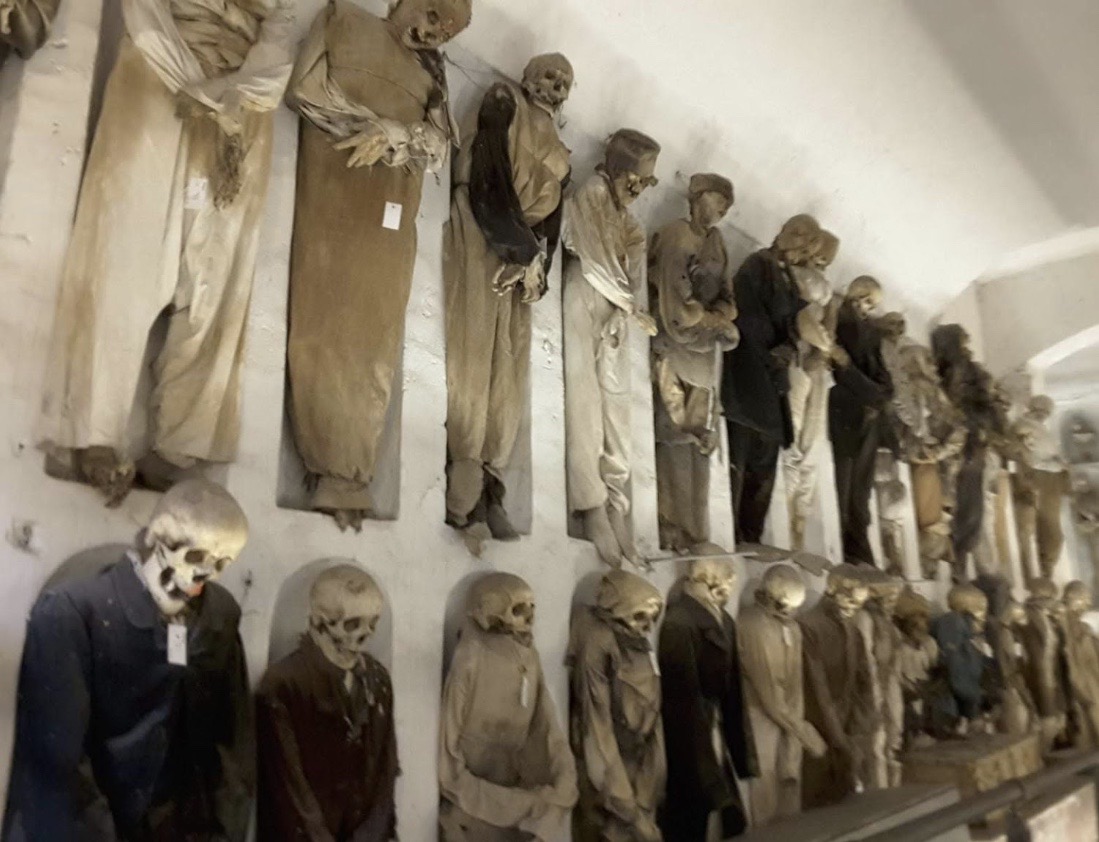
Spanish Inquisition in Palermo
This unusual museum lies within two historic buildings restored by the university—buildings where the Spanish imprisoned and tortured those suspected of crimes against the Church. Authorities needed only two anonymous reports of crimes to arrest citizens, which led to many abuses. The Dominican Order administered the trials, prisons, and torture, and kept prisoners for years. Some were released, some were exiled, and some did duty in the Spanish navy. All their properties were confiscated, but a few had enough wealth to pay for their liberation.
The extraordinary part of this museum is seeing the extensive graffiti drawn on the walls of cells by prisoners with reddish scrapings from the terra cotta floor tiles or ashes from the fire pots reserved for the more privileged. Drawings, portraits, complex scenes, text in several languages. The graffiti was hidden under plaster for centuries, and when it was recently discovered, it took five years to uncover and preserve.





Here’s and There’s







Style Notes
Italians really don’t like to be cold. The weather has been flirting with summer for a couple of weeks now, with temperatures in the high 60s and sometimes 70. Many tourists have stripped down to tee shirts, shorts, and sandals, but Italians are still bundled up. Many are still in down jackets and wool scarves.





